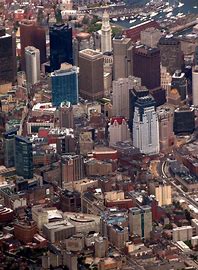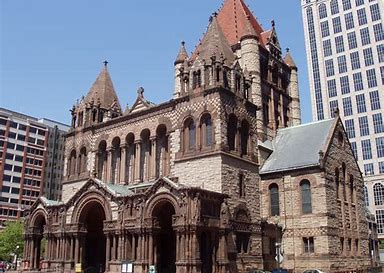
Boston, a city steeped in the annals of American history, is now contending with a modern existential threat posed by the relentless march of climate change. The city’s very foundation, constructed over generations on artificial land, is now at the mercy of rising sea levels.

The narrative of Boston’s struggle against the encroaching tides is not merely one of engineering challenges, but also a poignant reminder of the city’s historic commitment to collective action and resilience in the face of adversity.

The saga of Boston’s battle with the rising sea levels is not new, but the pace of change has quickened. With an estimated one-sixth of the city resting on land created by filling in tidal flats, the physical integrity of this historic urban landscape is being tested like never before.

As the planet has warmed, the high tide in Boston has crept ever higher, now threatening to submerge parts of the city that were once thought to be secure.

By mid-century, scientists estimate the city could witness a waterline a foot higher than in 2000, with the potential for two to four feet of sea level rise as soon as 2070, depending on global emissions.

Boston’s vulnerability is underscored by the $16 million fortification of John J. Ryan Park in Charlestown, a microcosm of the broader challenge.

Engineers are tasked with the formidable job of ensuring that a new 7-foot-tall berm, part of the park’s reimagining, can withstand the weight without causing the artificial land beneath to collapse. The park’s reconstruction, using innovative techniques like drilling narrow stone columns deep into the ground and utilizing lightweight foam glass aggregate, demonstrates the ingenuity required to adapt to the realities of climate change.

As Nancy Seasholes, a historian and historical archaeologist, highlights, “If it was a pancake, and you keep putting weight on top of it, eventually that pancake is going to splatter and push out to the sides, which will then compromise sea walls.” This captures the essence of the conundrum faced by engineers and city planners as they navigate the challenges posed by Boston’s made land.

This battle is not just about preserving real estate or urban infrastructure, but also about safeguarding the city’s historical heritage. Landmarks such as the Freedom Trail sites and the Charlestown Navy Yard stand testament to pivotal moments in American history. The USS Cassin Young, a World War II destroyer, and other historical relics face a future where adaptation to extreme weather events is not just necessary but urgent.

Boston’s response to these existential threats is steeped in its own rich history of communal action. From the protests against the Stamp Act of 1765 to the collective efforts at the Charlestown Navy Yard during World War II, Bostonians have a legacy of rising to the occasion. “Boston has long been a place where individuals have come together in collective action for a cause,” a testament to the city’s spirit and determination.

The spirit of innovation and skill-building that shaped Boston’s past is equally crucial in addressing the future.

The city has long been a hub of knowledge, from the engineering feats that expanded its territory to the modern-day climate resilience strategies being developed. As the city and its people face the threats posed by climate change, the teachings from Boston’s past can offer a blueprint for a sustainable and inclusive future.

The city’s initiatives, such as Climate Ready Boston and Climate Ready Charlestown, are pragmatic steps towards climate resilience. The goal is not only to protect against the rising tides but also to preserve the community spaces that have long served as hubs for collaboration and connection.

Boston’s story is emblematic of a larger narrative unfolding across coastal cities worldwide, where the intersection of history, culture, and modern engineering present both challenges and opportunities. While the city fortifies its parks and historical sites, it is also mobilizing its diverse population in a united effort to adapt and overcome.

The city that once played a pivotal role in the birth of a nation now stands at the forefront of a different kind of revolution – one that aims to secure its future against the unpredictable forces of a changing climate.
Relevant articles:
– Boston’s artificial land vulnerable to climate change, harder to protect, The Boston Globe
– Boston National Historical Park (U.S. National Park Service), National Park Service (.gov)
